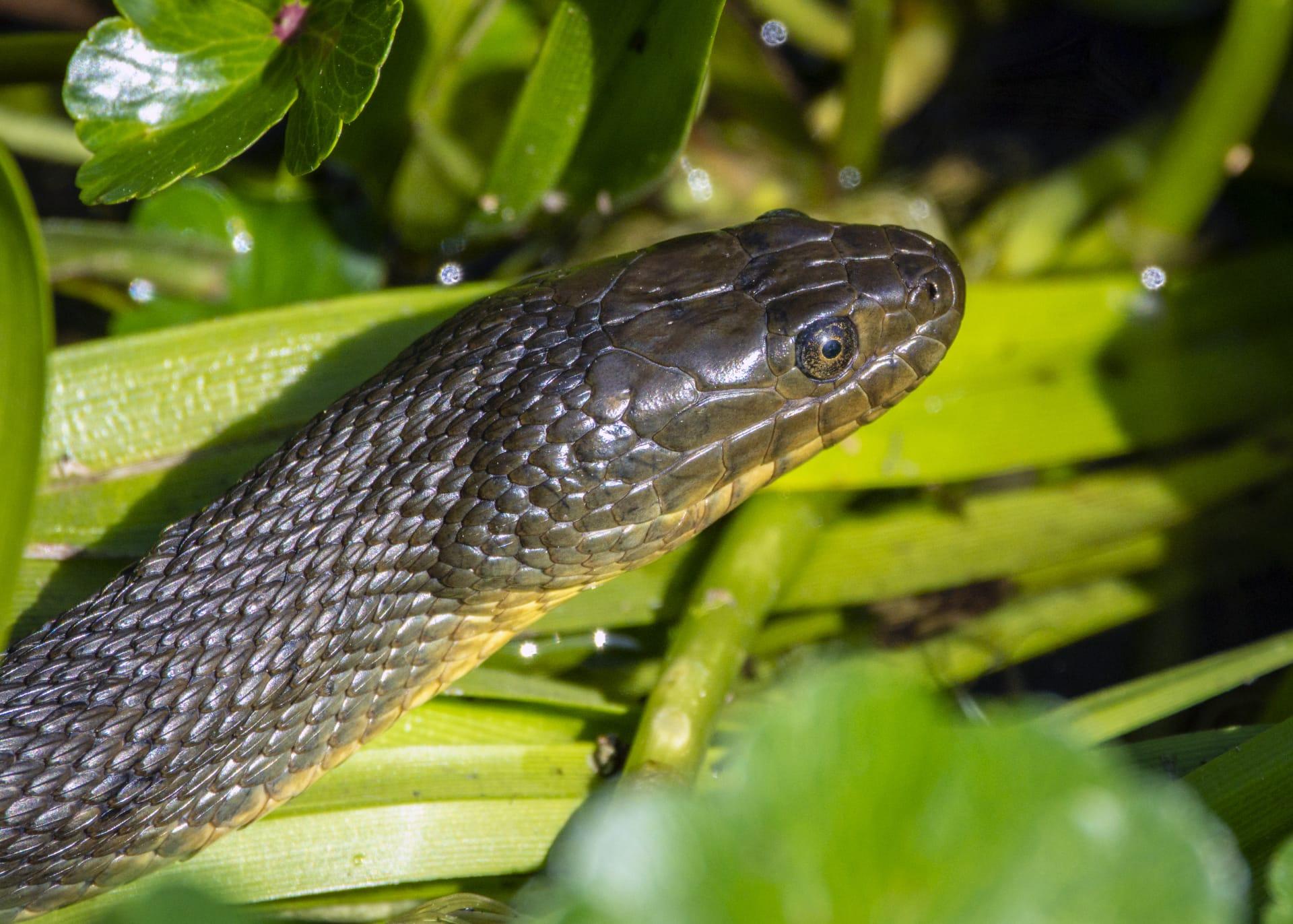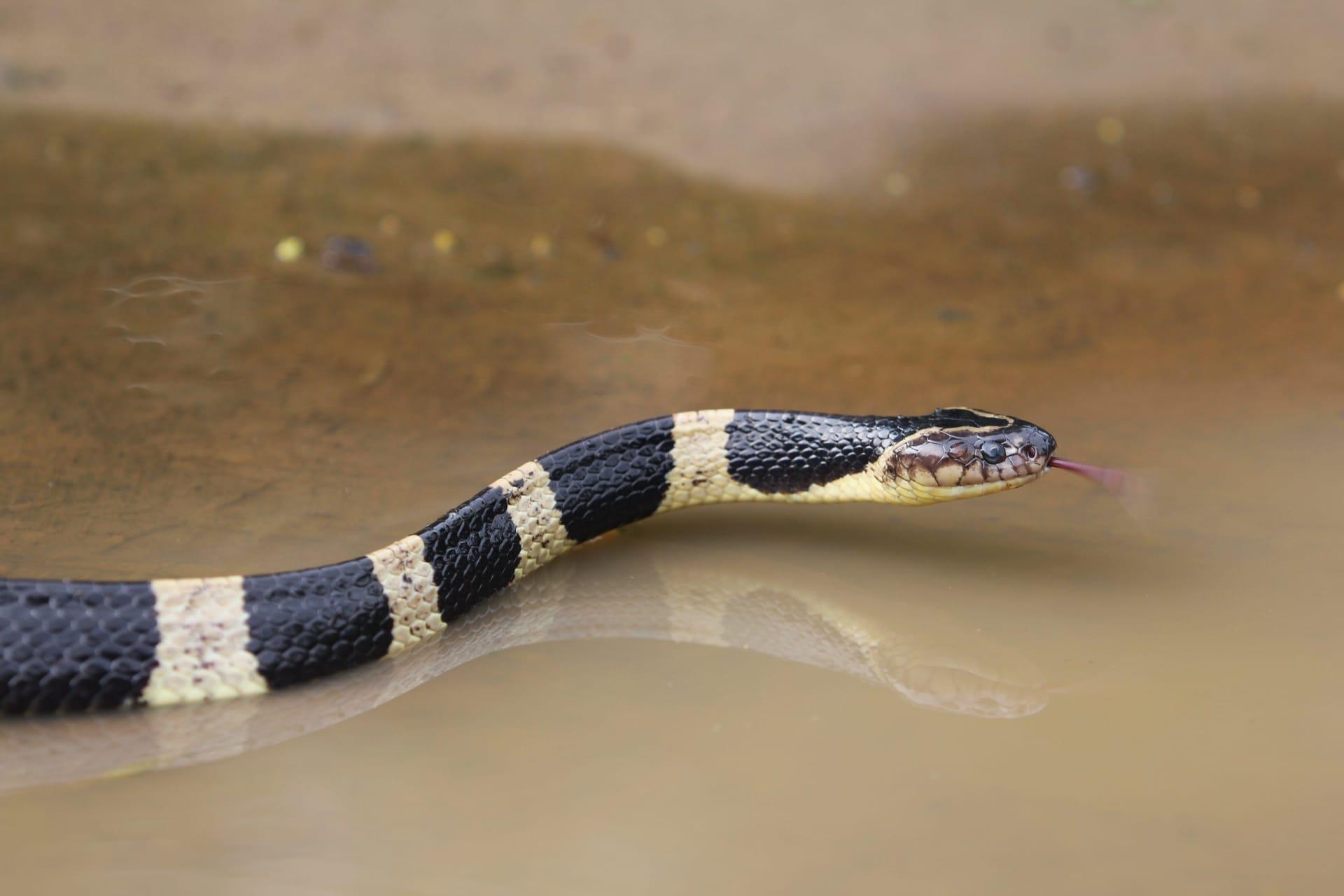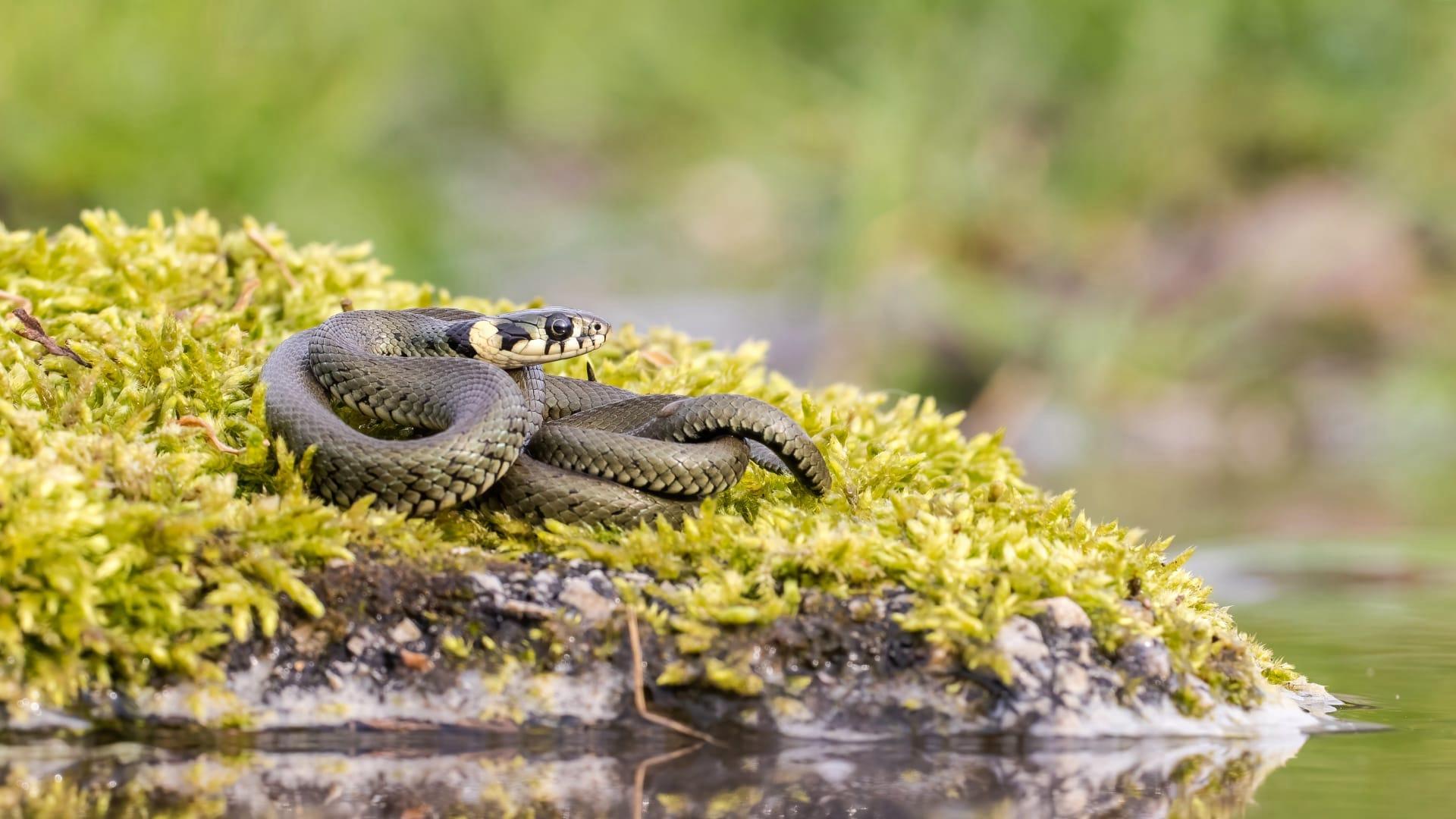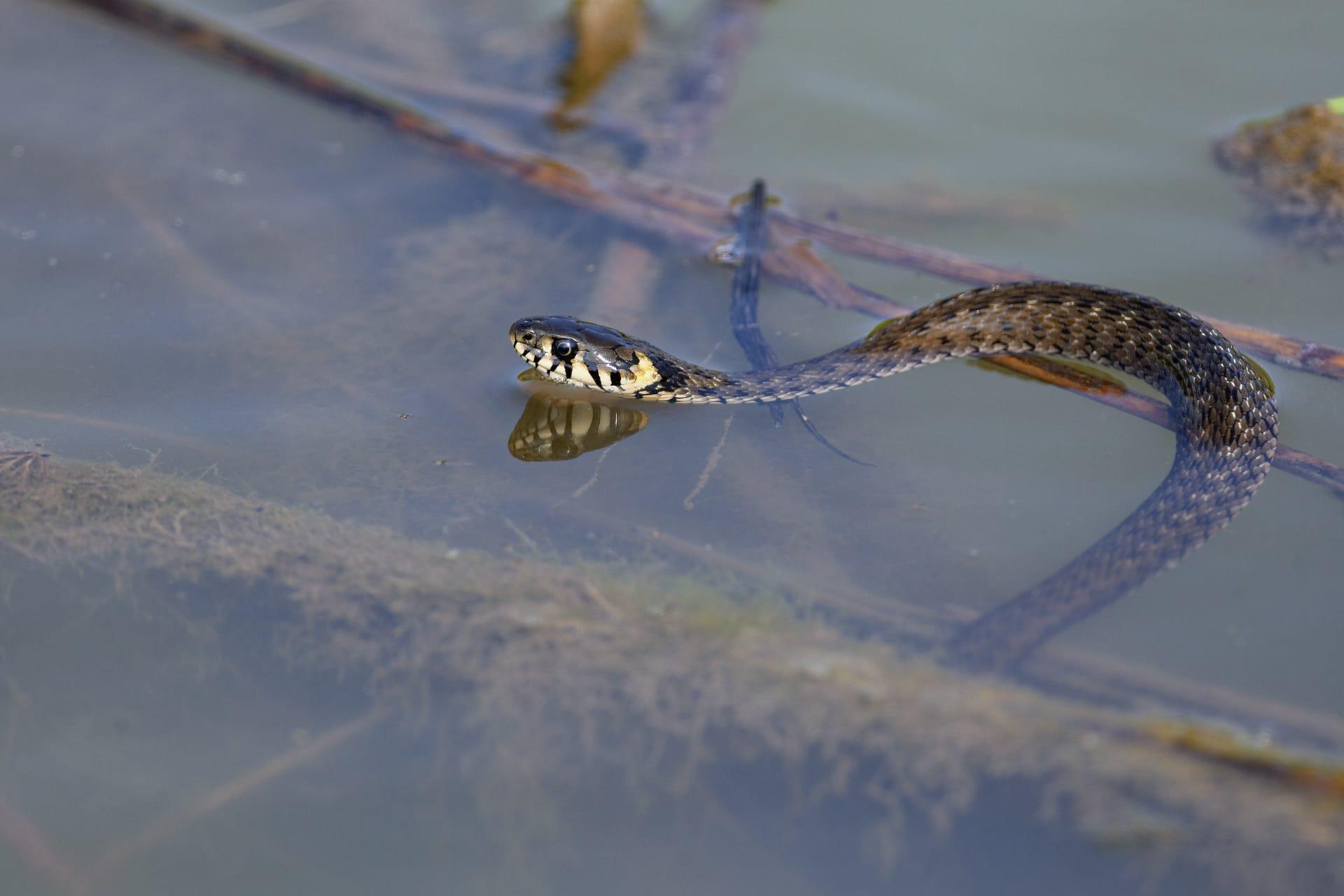1
Watersnakes, often found in North America, showcase an intriguing adaptation in their hunting strategy. Unlike many land snakes, they can see underwater, thanks to a unique set of sensory cells in their eyes. These cells are particularly sensitive to movements and vibrations, allowing watersnakes to efficiently detect and track prey in aquatic environments. This adaptation is crucial for their survival, as their primary diet consists of fish and amphibians. The sharpness of their underwater vision is comparable to a human wearing goggles, providing them with remarkable clarity in murky waters.
Another fascinating aspect of watersnakes is their ability to regulate their buoyancy. They achieve this through lung partitioning, where they can adjust the amount of air in different parts of their lungs. This unique ability allows them to float on the water's surface to bask in the sun or swiftly dive beneath the surface to escape predators or catch prey. The lungs of a watersnake are elongated, stretching up to 70% of their body length, which aids in this buoyancy control. This adaptation is not only vital for their hunting strategy but also plays a key role in their thermoregulation and defense mechanisms.

2
Watersnakes have evolved a specialized gland near their tail, known as the cloacal gland. This gland secretes a musky, pungent odor when the snake feels threatened. This smell is so potent that it can deter most predators, including larger mammals and birds. The chemical composition of this secretion contains sulphur compounds, which contribute to its strong and unpleasant odor. This defense mechanism is highly effective, especially when combined with their ability to swiftly disappear into the water, leaving a lingering smell to confuse potential threats.
Another remarkable feature of watersnakes is their reproductive strategy. They are ovoviviparous, meaning the females carry eggs inside their body until they hatch. Unlike many other snake species that lay eggs, watersnakes give birth to live young. This adaptation is particularly advantageous in aquatic environments, as it protects the developing embryos from fluctuating water temperatures and potential aquatic predators. The number of offspring can range from 10 to 30, and they are born fully independent, ready to swim and hunt immediately.

3
Watersnakes exhibit a unique feeding behavior known as 'gape-lure fishing.' In this technique, they open their mouths wide, exposing their brightly colored oral cavity to attract curious fish. Once a fish comes close enough, the snake quickly snaps its jaws shut, capturing its prey. This method of hunting is especially useful in murky waters where visibility is low. The contrasting colors inside the snake's mouth act as an effective lure in such environments.
Additionally, watersnakes have a remarkable ability to consume prey much larger than their head size. Their highly flexible jaws and skin enable them to stretch around large prey items. This adaptation is crucial for their survival, allowing them to exploit a wider range of food sources. Watersnakes have been observed consuming fish up to half their body length, demonstrating the incredible extensibility of their jaws and body.

4
Watersnakes are known for their territorial behavior, especially during mating season. Male watersnakes will aggressively defend their chosen area from other males, engaging in wrestling matches. These matches involve intertwining their bodies and trying to push each other's head underwater. Interestingly, these confrontations rarely result in injury, as they are more about demonstrating strength and dominance than causing harm. The winner gains the right to mate with females in that territory.
When it comes to thermoregulation, watersnakes display unique behavior. They are ectothermic, relying on external sources of heat to regulate their body temperature. On sunny days, they can be found basking on rocks or branches near water. However, unlike many reptiles, watersnakes can also regulate their temperature by changing their blood flow. By increasing blood flow to their skin, they can dissipate excess heat, and by restricting it, they can retain heat. This ability allows them to maintain an optimal body temperature even in fluctuating environmental conditions.

5
Watersnakes have a diverse communication system that includes both visual and chemical signals. During mating season, males perform a unique dance to attract females. This involves a series of undulating body movements and head bobbing, which is thought to display their health and vitality. Additionally, they use pheromones to signal their readiness to mate. These chemical signals are detected by females, who then respond based on the strength and quality of the pheromones.
Watersnakes play a crucial role in their ecosystem as both predators and prey. They help control fish and amphibian populations, which in turn affects the aquatic food web. Their presence is also important for maintaining the balance of their habitats, as they contribute to the nutrient cycle through their feeding and excretion.